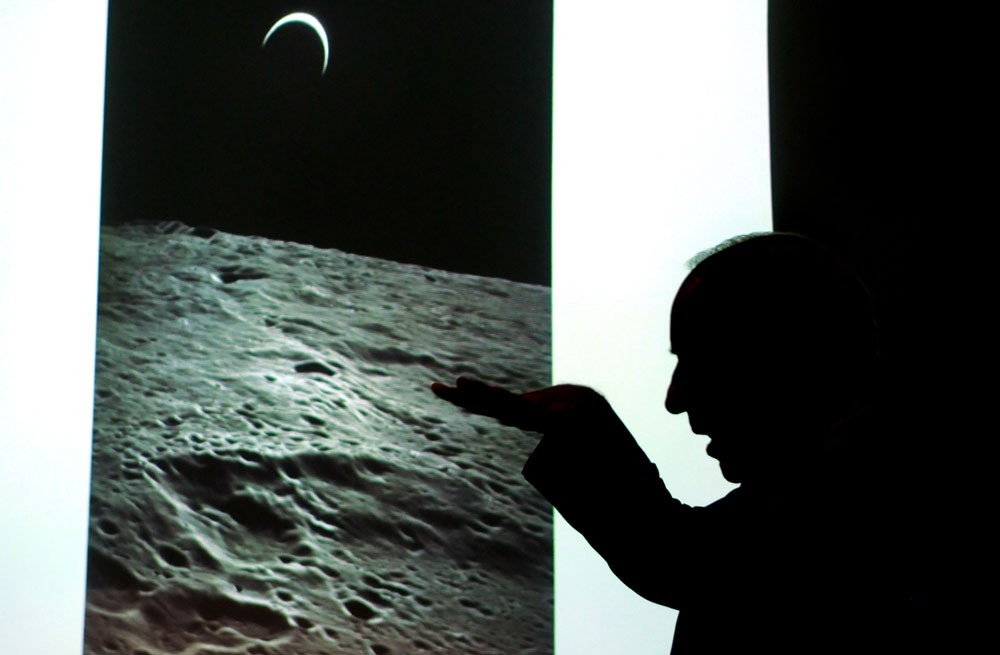As a kid, Andrew Jones played with toys by taking them apart. He found the circuitry of the electronic âÄúQuiz Whiz âÄú game more interesting than the questions it posed, and he credits that underlying curiosity with helping to motivate the work heâÄôs done as a student and researcher at the University. Al Worden , who was the command module pilot for the 1971 Apollo 15 moon mission , visited a first-year honors physics class Wednesday to present Jones, a senior in chemical engineering and chemistry, with a $10,000 check from the Astronaut Scholarship Foundation. The ASF was established in 1984 by the Mercury Seven astronauts , and the University has had 10 winners since 1994 . The scholarship is awarded based on merit, and Worden emphasized that the ASF looks for the few students at the top that are going to make a difference. Although he hasnâÄôt done research in aerospace technology, Jones has worked on a variety of research projects since high school, where he volunteered in an immunology lab. While in England during his sophomore year, he worked on biodegradable synthetic textiles, including shirts. Over the past three years, he has worked in chemical engineering professor Lanny SchmidtâÄôs lab , studying catalysts for reactions designed to convert renewable resources like sugars and pine into fuel. âÄúIâÄôve always been interested in energy,âÄù Jones said, explaining the motivation behind the Active Energy Club , which he started last fall. The Active Energy Club won a grant to do energy audits in buildings at the University. It has partnered with Facilities Management, as well as an electrical engineering senior design class, to find ways the University can cut back on energy use and save money. For example, movement sensors can be used to make sure lights are on only when needed and to trigger vending machines to turn off at night. The Active Energy Club also tries to engage high school students through presentations on energy. Worden, a member of the Astronaut Hall of Fame, said recipients can come from any area of science and engineering. âÄúEven though [Jones] is not going to be an astronaut, the things that heâÄôs working on will definitely help move us into the next frontier,âÄù said Beth Higdon , ASF communications manager. âÄúThe moon, Mars and beyondâÄù The âÄúnext frontierâÄù includes âÄúthe moon, Mars, and beyond,âÄù according to NASAâÄôs website . Worden spoke of returning astronauts to the moon to set up a laboratory, camp out and âÄúlearn about the physiology of a long-term stay on a hostile body,âÄù hopefully starting in 2015. Looking ahead to Mars travel, he said it will take two and a half years to get to the planet. Worden also looked back at the 13 days and two hours he spent in space. He orbited the moon 75 times and photographed a quarter of its surface. On the return trip to Earth, about 50,000 miles from the moon, Worden left the command module to retrieve film cassettes. Aside from this, he stayed in the spacecraft, which had about the same volume as a Volkswagen Beetle. He described the environment outside the spacecraft as âÄúvery ghostly,âÄù noting that it was pitch black aside from the little light offered by the Earth and moon, both of which he could see from his position. Astronauts are people, too Chris Thompson , a computer science first-year, said he liked how Worden brought up a remedial math class he had taken when he entered graduate school. âÄúWe place [these people] in superhuman status, but they are still people,âÄù he said. Jones, now looking ahead to graduate school, recalls knocking on SchmidtâÄôs door as a first-year student and asking if he could do research in the lab. Jones encourages students who want to do research to talk with professors. âÄúYou have to show that youâÄôre motivated, but you donâÄôt need experience,âÄù he said.

Image by Marija Majerle
Astronaut Al Worden talks to a freshman honors physics class about a photo of Earth he took while on the moon.
Apollo 15 astronaut awards U student
Published September 11, 2008
0

